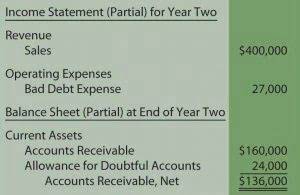Content

Things further complicate when overtime pay is earned by the employees. It can prove to be demotivating for the employees who have to spend hours together on their job to earn the money necessary to meet their various expenses. If you’re running any sort of business that employs people, an aspect that begs your attention is the pay frequency for your employees. There are two commonly used pay schedules – semi-monthly and bi-monthly. Biweekly pay and semimonthly pay can be confusing because employees generally receive two payments per month.
- If you have 10 employees who each earn $1,500 in gross wages per paycheck, you’ll need to have an additional $15,000 on hand both months that have three paychecks in them.
- For businesses, it can be less expensive to pay employees semi-monthly instead of bi-weekly.
- Running a semi-monthly pay for non-exempt employees can be challenging.
- Semi-monthly payroll goes off of two dates in the month, generally the 1st and the 15th, thus the day it falls on per month can differ.
- When your employees are getting paid biweekly, that means that payday occurs once every two weeks, and typically on the same day of the week (Friday is the most common payday).
- If you have hourly workers who earn overtime, it’s easier for an employee receiving bi-weekly pay to calculate the effects of working extra hours on his next paycheck.
If your employees are paid overtime, then you will appreciate having a bi-weekly payment schedule, as overtime shifts will never be split over two pay cycles. With a semi-monthly payment schedule, your employees will receive 24 paychecks in the year. Interestingly enough, if you pay your employees hourly or by the day, then some of the paychecks will be bigger than the others.
How Do You Calculate Semi-Monthly Pay?
With a bi-weekly payment schedule employees are paid every other week, whereas a semi-monthly payment schedule pays employees twice a month on two specific dates each month. This LLC Accounting: Everything You Need to Know means employees will be paid twice a month, or 24 times per year rather than 26 times per year. According to the Bureau of Labor Statistics, 43% of employees are paid biweekly.
Is semi-monthly 3 weeks?
The biweekly payroll is when the payment is processed every two weeks. Conversely, semi-monthly pay occurs twice per month. It can be on every fifteen days, that is, on the 15th and the last day of the month.
A semi-monthly payroll schedule pays employees twice a month, totaling 24 cheques for the whole year. This type of payroll is more suited towards companies who pay their employees a high salary and don’t need to worry about missed days due to bank holidays. Earned wage access or on-demand pay can be a valuable financial wellness benefit for hourly employees. By offering greater financial flexibility, employers can empower their workforce, enhance employee satisfaction, and improve overall financial well-being. By striking the right balance, employers can foster a positive work environment and provide a valuable benefit that supports their employees’ financial goals and needs. Perhaps your hourly employees want to double-check that their paychecks are in the right amount.
Bi-Weekly Payroll Vs Semi-Monthly Payroll: What’s The Difference?
Further, it is easier for employees to budget for cash receipts every other Friday, rather than receipts that may be accelerated or delayed by the presence of weekends and holidays. What’s more, when you hire new employees, you often have to prorate their first paycheck to make sure they’re only paid for the hours and days they actually work during that pay period. With a weekly pay schedule, you can essentially avoid this problem, since most new hires start on a Monday—the beginning of a new pay period.

If you have 10 employees who each earn $1,500 in gross wages per paycheck, you’ll need to have an additional $15,000 on hand both months that have three paychecks in them. Running semimonthly payroll can also be difficult to track when weekends and holidays come into play. If a pay day falls on a weekend or holiday, you have to decide to either advance or delay payroll for that pay https://simple-accounting.org/understanding-the-cost-of-bookkeeping-for-small/ period, which adds another responsibility to your plate. Deciding between biweekly vs. semimonthly payroll can be a difficult one, especially because federal pay laws state that you must keep the same frequency throughout the year. Understanding the difference between biweekly vs. semimonthly payroll can prevent financial setbacks, keep your business legally compliant, and more.
ACCELERATED BI-WEEKLY PAYMENTS
Or, maybe your salaried workers want to get more granular and see what their hourly earnings are. Much of that is owed to the fact that there’s a lot to figure out when it comes to managing the financial aspects of paying your employees. You need to make sure you’re complying with overtime requirements. And, you need to figure out the best payroll schedule for your business. Employees who are paid semi-monthly have higher paychecks than those who are paid every other week since companies who use semi-monthly frequency run payroll less.
Is semi monthly the same as quarterly?
Semimonthly = every two weeks. Quarterly = every three months (once per quarter)
Its structure allows the salary expenses to be adjusted easily into the expected budget. Unfortunately, there are not exactly the same number of workweeks in each month nor are there exactly the same number of days and hours in each semi-monthly pay period. The big difference here is that bi-weekly payments are made 26 times per year which is the same as one extra monthly payment, or 2 extra semi-monthly payments per year. The extra payments are applied directly against your principal thereby saving you interest and shortening the amortization of your mortgage. There are also advantages to using a biweekly payment schedule in your business.
Differing Pay Periods
Deciding on a pay frequency for a small business is an important decision. Pay frequency determines how often the business must process payroll and when employees receive their paychecks. There are four common pay period options, including weekly, biweekly, semimonthly, and monthly. Two popular, yet easily confused, pay periods are biweekly and semimonthly.

Check with the Department of Labor in each state in which you operate to find out what the specific laws are — if any — around pay frequency. If you expand your business operations into other states, you’ll need to make sure you’re following each state’s requirements around pay frequency. Where your business operates geographically also plays a role in determining which type of payroll frequency to choose.
